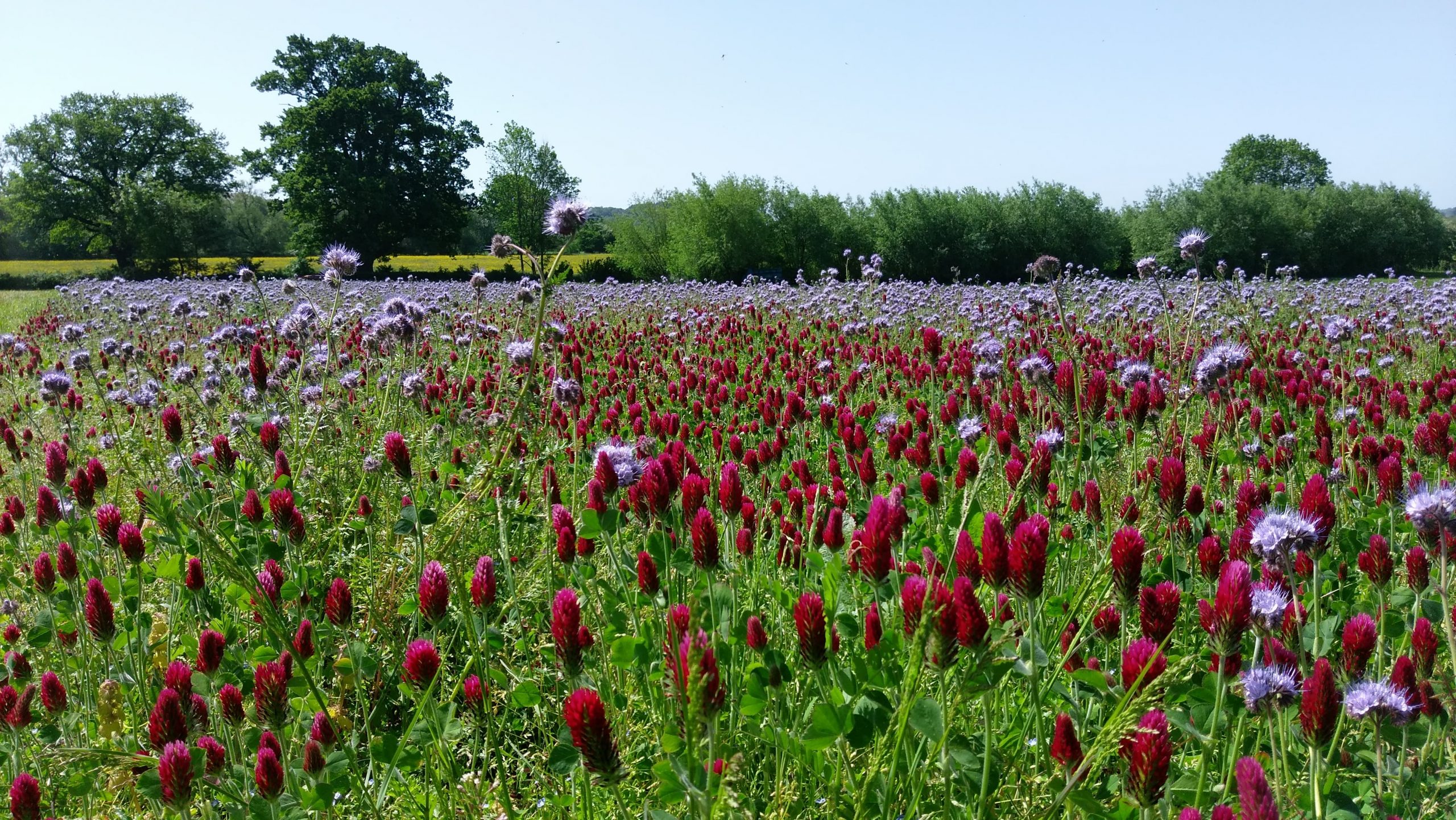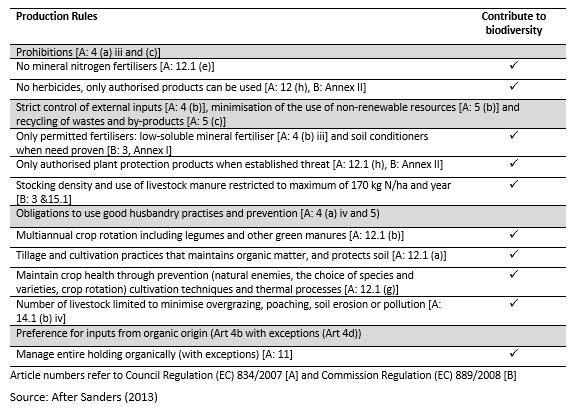Introduction 
Background
IFOAM Organics Europe commissioned this policy review by the Organic Policy, Business and Research Consultancy. It is split into four tasks:
1. Overview of studies on the biodiversity impacts of organic farming
A large number of research projects and reviews have been conducted on this topic. The aim of this part of the study is not to undertake another comprehensive review, but to summarise the main outcomes with a focus on primary land use types (arable, grassland, horticulture etc.) and geographical conditions across the EU. It identifies the scope, strengths, and weaknesses of the evidence base where published literature is available. The range of biodiversity impacts, from soil organisms to plants, birds, habitats and landscapes are considered. Recent reviews (Lampkin et al., 2015; Dimambro et al., 2018; Sanders and Hess, 2019) provides a starting point for this review, updated with any significant new evidence from the last two years.
2. How do organic management practices contribute to these outcomes?
The aim of this part of the study is to illustrate why it is that organic farming delivers the biodiversity impacts recorded, limitations on this potential, and how organically farmed land could increase biodiversity outcomes (including how any increase in the extent of organic area might best benefit biodiversity). This will separate actions carried out by all organic farmers – e.g., restricted use of fertilisers, pesticides and veterinary inputs and enhanced crop diversity through rotations and use of legumes – from additional activities that can be undertaken by individual organic farmers, building on their baseline organic status – for example, the creation and management of habitats to encourage biological pest control. Land sharing, with biodiversity enhancement and agricultural management designed to be mutually beneficial and synergistic (i.e., the sum of the whole is greater than the sum of the parts), is a key theme.
3. Identification of existing policy options to support this process
A review of EU Member State (MS) approaches to combining organic farming and biodiversity-related agri-environment policy is conducted based on existing data. This ranges from restrictions preventing support for organic farming and agri-environmental/climate scheme (AECM) activities on the same land, to specific options for biodiversity specially designed for organic farmers, with multiple combinations in between. This also considers how to overcome some of the eligibility issues that organic land currently faces in accessing AECM funding.
4. Options for future policy
This considers the implications of the EU Green Deal, Farm to Fork and Biodiversity Strategies, CAP 2021-2027 proposals including Eco-schemes (including Council and Parliament positions and any agreements reached) and the potential for innovative policy options in this context. The FIBL/IEEP guide prepared for IFOAM Organics Europe (Lampkin et al., 2020) provides an early introduction to the potential of Eco-schemes and the Green Architecture of the new CAP to provide support for the delivery of biodiversity benefits by organic farming.
Context
IFOAM defines organic agriculture as “… a production system that sustains the health of soils, ecosystems, and people. It relies on ecological processes, biodiversity and cycles adapted to local conditions, rather than the use of inputs with adverse effects. Organic Agriculture combines tradition, innovation, and science to benefit the shared environment and promote fair relationships and good quality of life for all involved” (IFOAM, 2008). The principles of Health, Ecology, Fairness and Care (IFOAM, 2005) are what underpins organic agriculture. In the EU there are defined production rules that are covered by regulations 834/2007 (EU, 2007) and 889/2008 (EU, 2008). These production rules are designed to promote environmental protection, maintain biodiversity and build consumer trust in organic products. They cover such principles as prohibiting the use of GMOs and limiting the use of artificial fertilisers, herbicides and pesticides but also promoting approaches to the organic system such as crop rotation, cultivation of legumes and green manures to fix nitrogen and improve soil fertility, choice of resistant varieties and breeds to reduce the impacts of weeds, pests and diseases and promoting animal health through not over stocking. A number of these practices such as crop rotations, appropriate and diverse varieties and breeds, and limited use of artificial fertilisers and pesticides, as well the improvement of soil health will have direct impacts on biodiversity in organic farming systems. Table 1.1 illustrates where specific EU production rules contribute to biodiversity. These are considered in more detail in Chapter 3.
Organic farming has been supported as an agri-environmental measure in the European Union since the early 1990s, recognising the beneficial impacts for biodiversity, as well as water, soil, air and climate protection, of the practices covered by organic standards. This recognition was given added weight by the de facto recognition of organic farming for Greening as part of the CAP Pillar 1 Basic Payments from 2014, and the setting of a specific target of 25% of EU land area to be managed organically by 2030 as part of the Biodiversity and Farm to Fork Strategies published by the European Commission in 2020. The achievement of this target has been given additional support with the publication of the third EU action plan for organic farming in March 2021. The policy context is considered in more details in Chapters 4 and 5.
